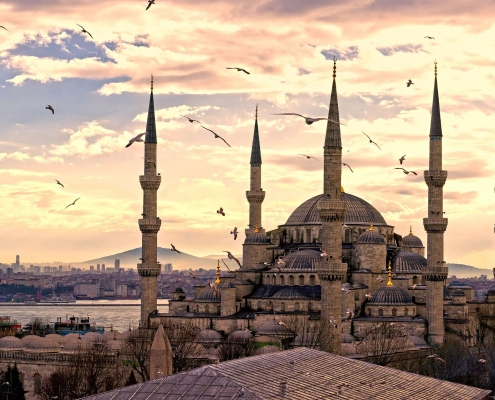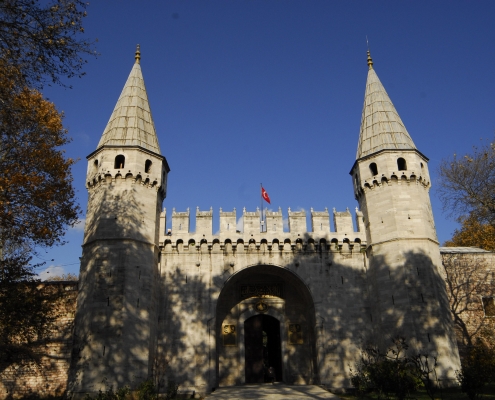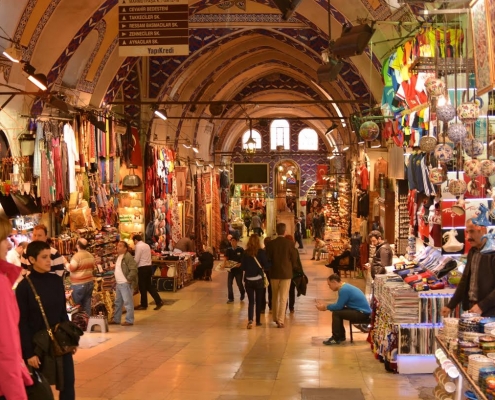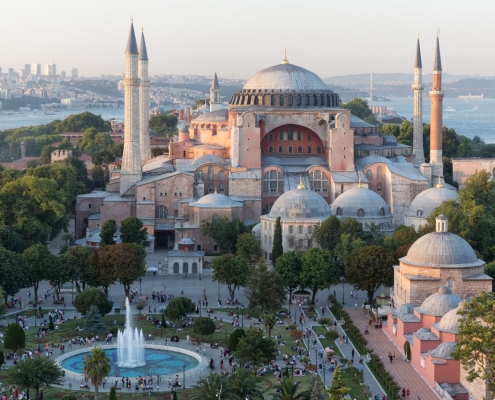The Hagia Sophia, one of the historical architectural wonders that still remains standing today, has an important place in the art world with its architecture, grandness, size and functionality.
The Hagia Sophia, the biggest church constructed by the East Roman Empire in Istanbul, has been constructed three times in the same location. When it was first built, it was named Megale Ekklesia (Big Church); however, after the fifth century, it was referred to as the Hagia Sophia (Holy Wisdom). The church was the place in which rulers were crowned, and it was also the biggest operational cathedral in the city throughout the Byzantine period.
The first church was constructed by Emperor Konstantios (337-361) in 360. The first church was covered with a wooden roof and expanded vertically (basilica) yet was burned down after the public riot that took place in 404 as a result of the disagreements between Emperor Arkadios’ (395-408) wife empress Eudoksia and Istanbul’s patriarch Ioannes Chrysostomos, who was exiled. The patriarch’s mosaic portrait can still be viewed at the tymphanon wall located in the northern part of the church. No remains have been recovered from the first church; however, the bricks found in the museum storage branded ‘Megale Ekklesia’ are predicted to belong to the first construction.
The second church was reconstructed by Emperor Theodosios II (408-450) in 415. This basilical structure is known to contain five naves and a monumental entrance; it is also covered by a wooden roof.
The church was demolished in January 13, 532, after the public riot (Nika revolts) that took place during the fifth year of Emperor Justinianos’ reign (527-565), when the ‘blues’ who represented the aristocrats, and the ‘greens’ who represented the tradesman and merchants in the society, collaborated against the Empire.
Remains found during the excavations led by A. M Scheinder of the Istanbul German Archeology Institute, 2 meters below ground level, include steps belonging to the Propylon (monumental door), column bases and pieces with lamb embossings that represent the 12 apostles. In addition, other architectural pieces that belong to the monumental entrance can be seen in the west garden.




